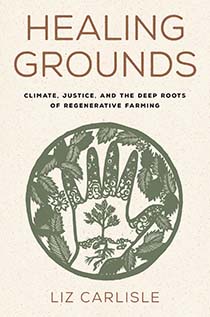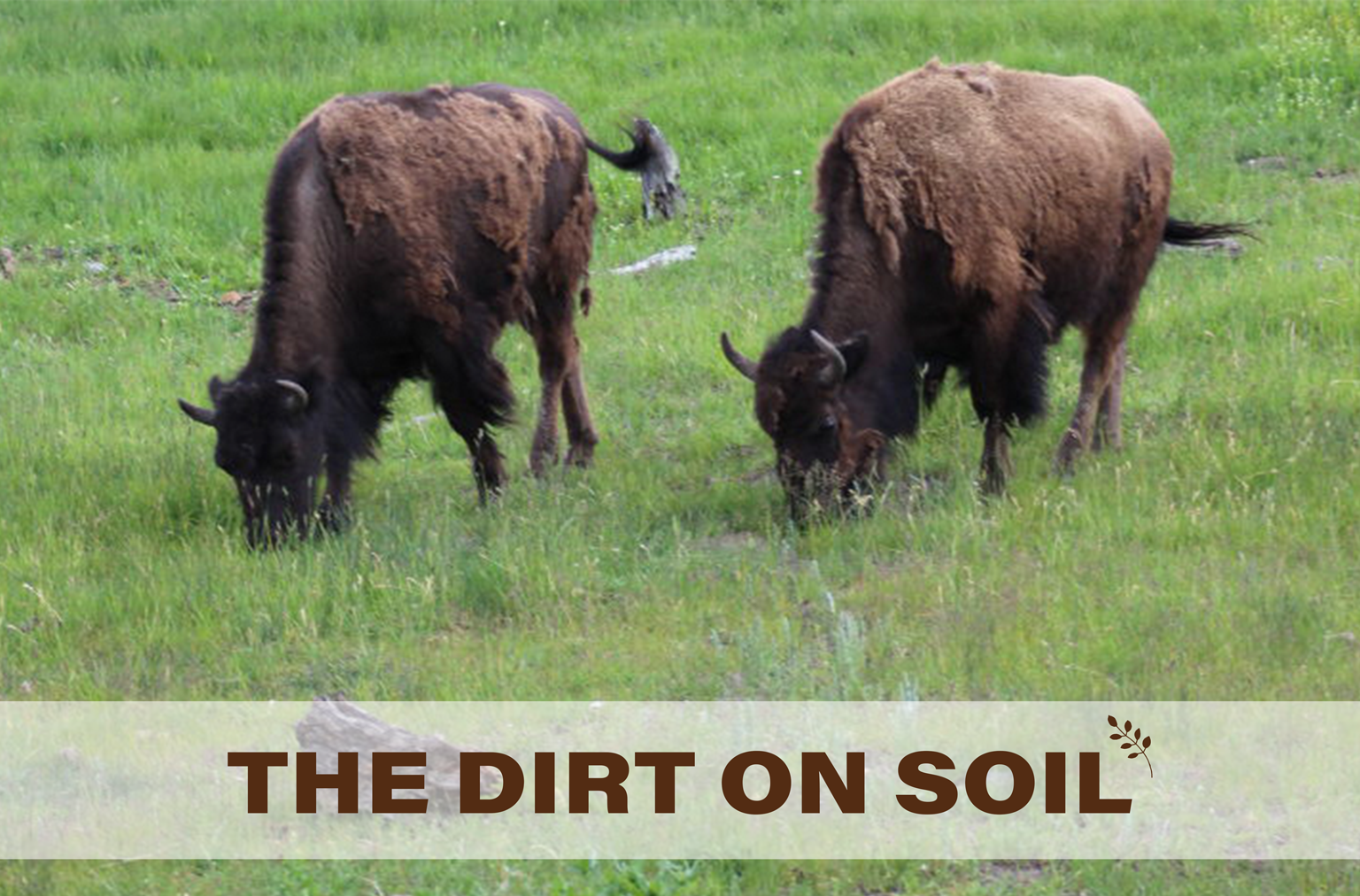 From Healing Grounds: Climate, Justice, and the Deep Roots of Regenerative Farming by Liz Carlisle; Copyright © 2022 Liz Carlisle. Reproduced by permission of Island Press, Washington, D.C
From Healing Grounds: Climate, Justice, and the Deep Roots of Regenerative Farming by Liz Carlisle; Copyright © 2022 Liz Carlisle. Reproduced by permission of Island Press, Washington, D.C
Ed. note: For our next curated piece in our The Dirt on Soil series, we are using an excerpt from Liz Carlisle’s investigation into how indigenous, black, and immigrant farmers are building on their experiences of being disconnected and now reconnected to the land to heal both themselves and their soil.
At this point, I realized that I needed to examine the story of US agriculture—a story I thought I knew—through a lens other than my own. I needed to speak to people whose ancestors had experienced the slaughter of their bison herds, the enslavement of their entire family, the brutal exploitation of migratory farm work, or incarceration at the hands of their own government while their crops were left to rot. Aware that many people with such family histories were sitting right next to me at sustainable agriculture conferences, I became intensely curious about what farmers and communities of color might teach me about how to work toward healing on the land. When I asked the question this way, a rich landscape of regenerative agriculture began to come into view.
I spoke with Indigenous Montanans working to restore native prairie and bring home their bison relatives. I talked to “returning generation” Black farmers reaching back to their African heritage to inform new agroforestry initiatives. A Chicana soil ecologist—herself the child of farmworkers—showed me the results of her research with immigrant Mexican and Hmong farmers in California’s Central Valley, whose highly diverse small farms were teeming with beneficial fungi. The more I learned, the more I came to see that regenerative agriculture was neither a relic nor a fantasy. It had always been here, but on the margins. Pushed to the edges of industrial agriculture, these practices had been sustained by people pushed to the edges of society. This was not just a story about regeneration but also one about liberation—and the two were powerfully intertwined.
In organic farming circles in my home state of Montana, I had been introduced to an agrarian philosophy descended from Thomas Jefferson, who famously waxed poetic about the virtues of those who worked the land. Small family farmers, Jefferson believed, were good stewards, good neighbors, and the ideal subjects to guide a democratic nation. “Those who labour in the earth are the chosen people of God,” Jefferson wrote in his Notes on the State of Virginia, “whose breasts he has made his peculiar deposit for substantial and genuine virtue.”
But what Jefferson could not quite bring himself to admit was that the majority of the people actually laboring in the earth of the nascent United States were enslaved. Following emancipation, the nation’s agricultural labor would be passed on to slave descendants, then immigrants whose legal status was carefully manipulated to approximate a similarly oppressive social condition. Outnumbering by far the European American settlers whose homesteads became the rhetorical centerpiece of our national agrarian mythology, these people of color were in direct relationship with the landscapes of this continent during the most transformative and consequential time in their history. Like the Indigenous people who preceded them on the land, they knew all about soil getting worn down and broken open. The story of the earth and its wounding was their own story, their own wounding.
And yet, not everything was broken. As I learned from farmers, scholars, and advocates who had spent lifetimes digging into these buried stories—some of them looking into their own families’ pasts—the regenerative farming traditions of their ancestors had been suppressed but never fully snuffed out. Carefully tended in the gardens of the enslaved and the murals of the landless, these traditions had provided both material subsistence and another form of sustenance that was difficult to put into words. There had been centuries of this survival work.
Seeds braided into hair and smuggled across borders, passed down generation to generation. Bison and their human relatives, confined to reserves, dreaming of reunion on their ancestral lands. Milpas on the edges of farm fields. New Year’s meals of black-eyed peas. Networks for sharing harvest labor. All these practices had persisted, despite the confines of structural racism. Might this moment of climate crisis be their time to blossom?
Teaser photo credit: By Euphoria42 – Own work, CC BY-SA 4.0, https://commons.wikimedia.org/w/index.php?curid=49897591






